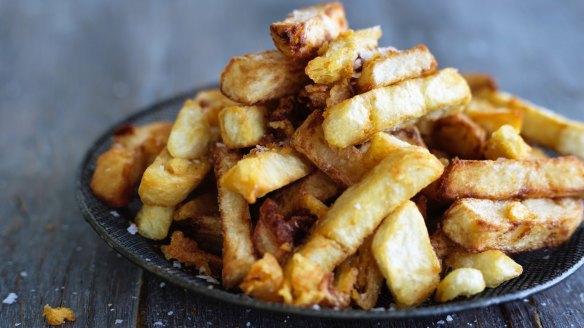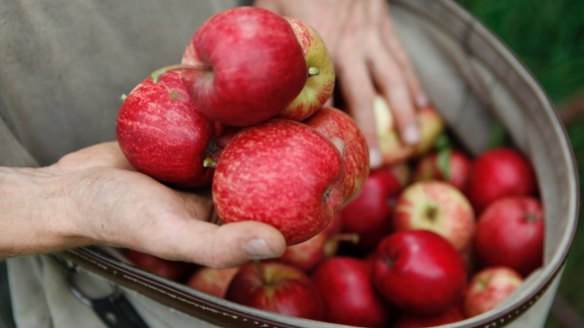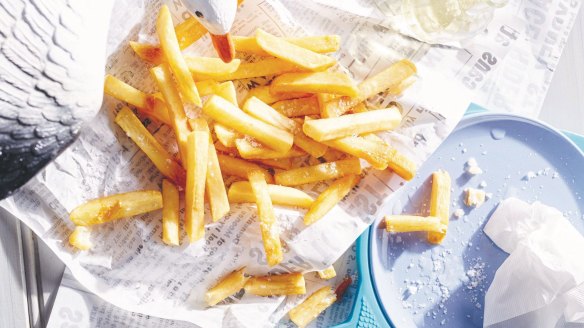Crunch time: The science behind our love of hot crispy chips

The half-time siren sounds. You rush to join the already long food line. Frustration builds, folding into relief as you swipe a bucket of hot chips. Suddenly, it's sadness, frustration, anger. The chips are soggy.
The feeling is familiar. But did you know our resentment of the soggy chip began long before deep fryers existed?
Dr Gie Liem, senior lecturer in Deakin University's Centre of Advanced Sensory Science, likens the crunch of a perfectly fried chip to the "Goldilocks of food textures".
"A lot of fruit and vegetables are crunchy on the outside when ready for consumption. When they're too hard to bite into it means they're not quite ready to eat and when they're too soft then that means they're overripe."
So when we clock that crunchy on the outside, soft on the inside texture – like another footy institution, the meat pie, or a perfectly ripe apple – our brain tells us it's just right. Slimy foods are more universally controversial – think oysters.

Footy grand final week means pressure on Australia's potatoes and fryers will simmer close to boiling point.
If you're at a game, the trick to avoiding sogginess is to get in quick and secure a fresh batch, according to Dr Liem, whose research has recently focused on why people choose certain foods and the role of texture.
"When chips are fried the moisture is kept inside. To get a crispy outer shell, the moisture steams that inside potato to make it nice and fluffy," Dr Liem said.
"But when you keep it for too long, the moisture goes to the outside and makes the chip just soggy."
If you're cooking chips for guests, the ideal potato is floury, high in starch and reasonably low in sugar (too much sugar and the chips will burn easily).
Dr Liem, born in Holland where hot, crunchy chips are sacrosanct, then recommends cooking the potatoes three times – boiling them, then frying them at 160 and 180 degrees Celsius – in order to remove all excess moisture.
"Once you've tasted that, you're like 'Okay, that's what chips is'."

Tracing back to our ancestors avoiding overly soft fruit and vegetables, Dr Liem says "when we reject food it's often because of the texture" more than anything.
"Texture is used to determine the quality of food. Smell increases our appetite, we walk past a bakery and think 'yum'. In your mouth, you taste the food and decide how much you'll eat and when you'll swallow it. But texture determines whether it's good quality or bad quality."
Other research has also suggested the combination of fat and carbohydrates is what makes chips – and foods like doughnuts – irresistible.
Condiments, Dr Liem says, are a more cultural affair – tomato sauce in Australia and the US, mayonnaise in Belgium and the Netherlands, gravy and curds for a Canadian poutine.
"While some of these seem to align with what we know about taste science – for example vinegar provides something acidic to cut through the fatty fries – they can also be counter-intuitive. Pouring on vinegar is the fastest route to a soggy chip."
Grand final hosts, you have been warned. Tomato sauce, chicken salt and vinegar will only take you so far.
If you want happy guests, give them the crunch.
Restaurant reviews, news and the hottest openings served to your inbox.
Sign up